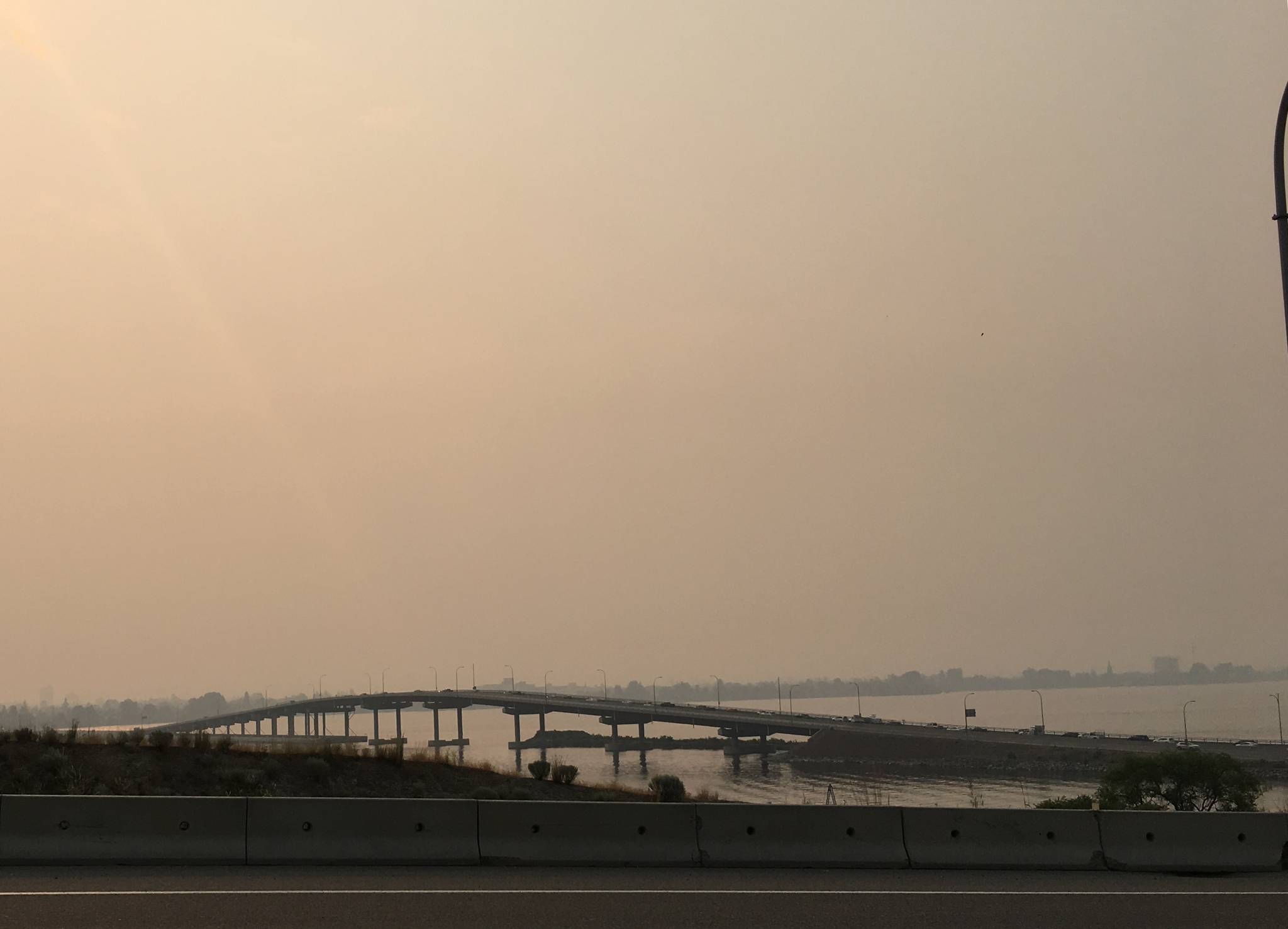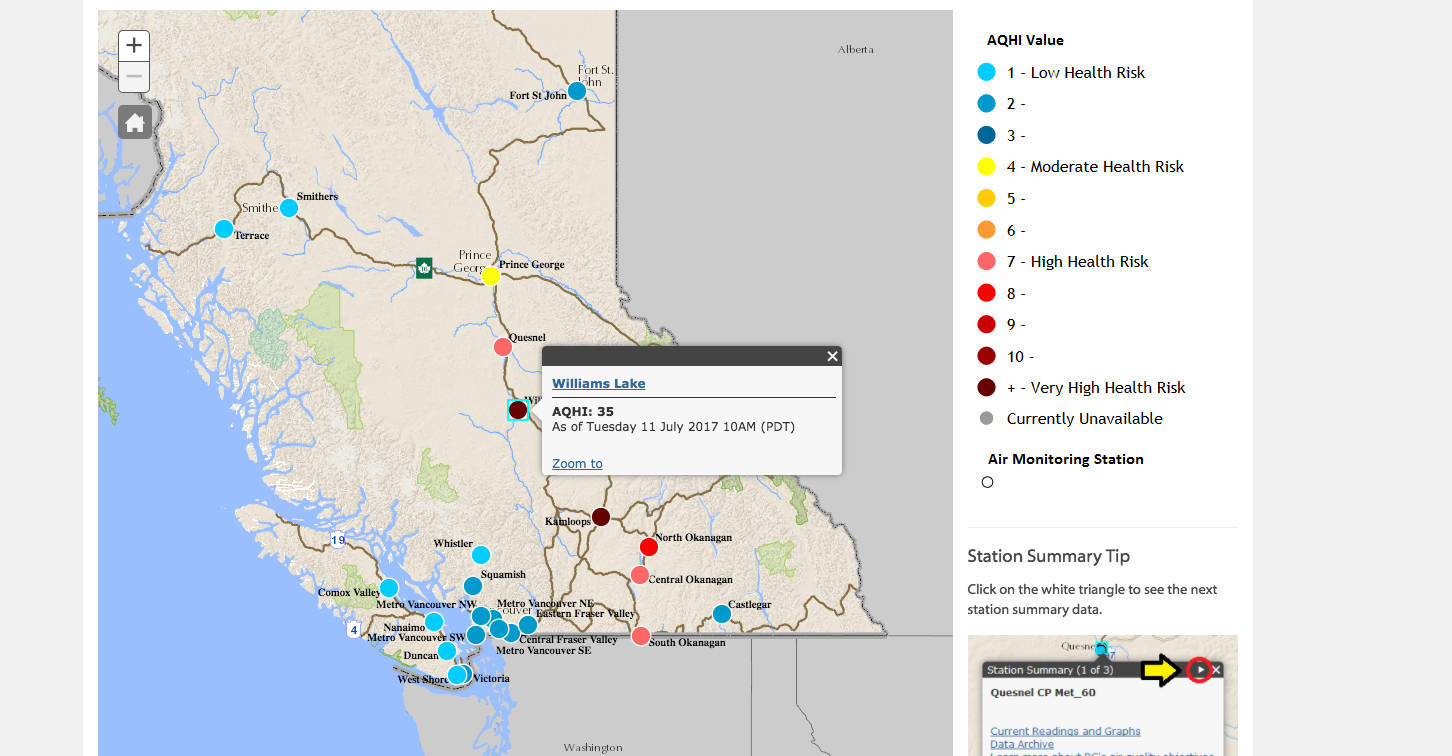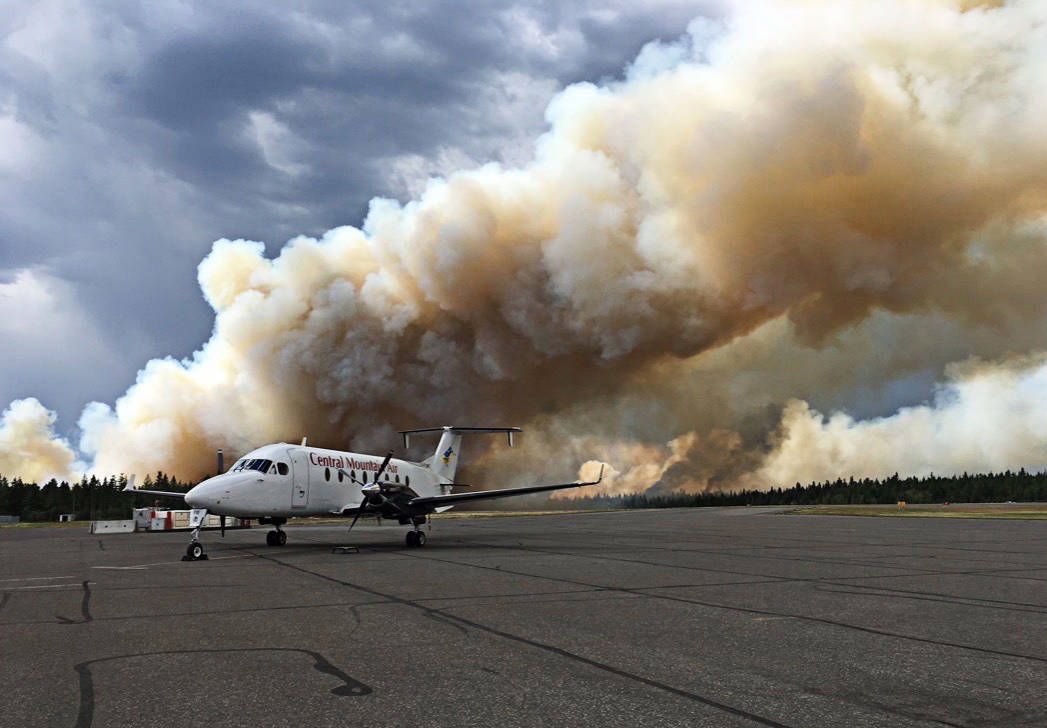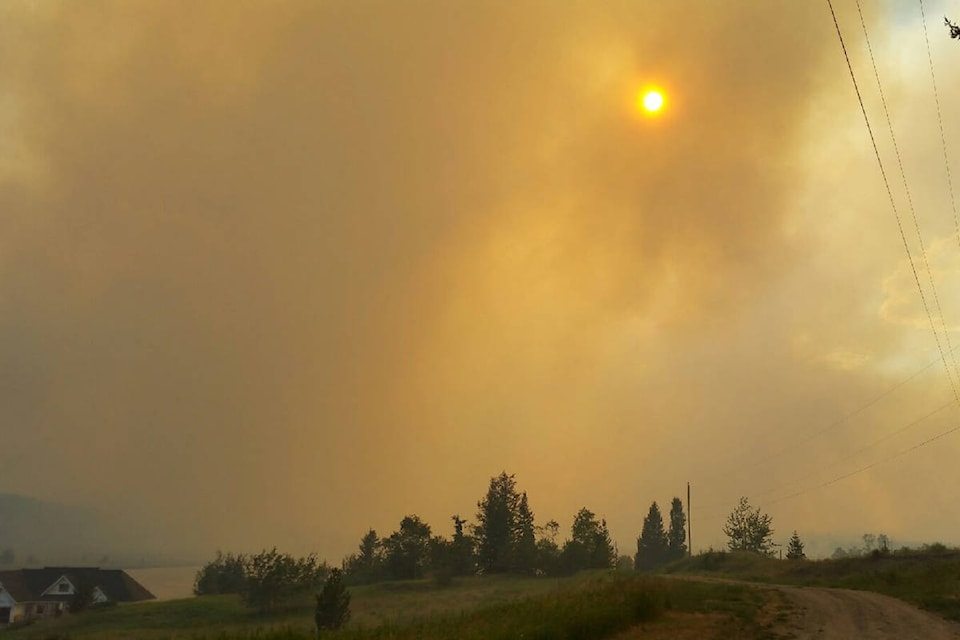There is currently no sign that Mother Nature is going to help fight fires that have spread across the province.
From high heat to localized winds and lightning, Environment Canada weather forecasts show no relief for all B.C. Interior communities battling wildfires.
“We do not see any big system coming through that would bring significant amounts of rain right now,” says Environment Canada meteorologist Alyssa Charbonneau. “What we do see is some light rain with a mix of thunderstorms as well. Not anything that is very helpful in terms of helping with the fire situation.”
The Cariboo and North Thompson regions can expect hot and dry conditions with a small risk of thunderstorms and rain. Residents in the Williams Lake and Quesnel areas are scrambling to get out of the area as wildfires continue to rage on.
“It is going to be mainly sunny today,” says Charbonneau. “There is a small hint that some cloud may be coming in tonight, with a risk of a thunderstorms developing. We are not expecting much activity before everything clears out Thursday and we move into some more dry, hot weather.”
The Thompson - Nicola region is expected to stay hot and dry right through this week’s forecast, while crews battle wildfires in 100 Mile House and Ashcroft.
“They are expecting hot, dry weather. Temperatures will stay in the high 20s and climbing towards the end of the week,” says Charbonneau. “It is going to stay dry.”
In the Similkameen area, where fire crews are battling the Princeton fire, it is the same with dry, hot conditions expected this week and weekend.
In the Central and South Okanagan, hot and dry conditions are expected to persist.
“Temperatures are going to rise at the end of the week, reaching the low 30s and remain dry.”
For the North Okanagan, Shuswap and Kootenays there is signs that there could be further thunderstorm activity.
Over 10,000 #lightning strikes recorded over the southeastern BC yesterday. pic.twitter.com/z7RRAwxcna
— ECCC Weather BC (@ECCCWeatherBC) July 11, 2017
“Towards Vernon, the Shuswap and eastern section could see a slight risk of a thunderstorm or a shower,” says Charbonneau.
“Temperatures in general are going to get into those low 30s later this week.”
On top of the fire and heat, air quality is a major concern. A smoky skies advisory was issued for the Cariboo, Thompson, Shuswap, Okanagan, Similkameen, Fraser Canyon and Nicola regions.
As of Tuesday morning, many of the air quality ratings had taken a significant dip. There are only a few air quality stations in B.C., but so far the Williams Lake area is the worst hit.
Southern B.C. satellite loop from early this morning. Shows thick wildfire smoke.#BCWildfires #BCStorm pic.twitter.com/RMtnvlKh4d
— ECCC Weather BC (@ECCCWeatherBC) July 10, 2017
At the Williams Lake station the Air Quality Index is dangerously high, rated at 35 on a scale that only goes until 10. Anything above 10 is considered a ‘very high health risk’.
Further south at the Kamloops station, the Air Quality Index is considered an 11, also a very high health risk.
In the North Okanagan, the rating currently sits at an eight, while the remainder of the Okanagan Valley sits at seven. There is no reading in the Princeton area.
Around Quesnel the rating is also reported at a seven, or a ‘high health risk’.
Curious where the #BCwildfire Smoke is heading? Check our this handy resource BlueSky: https://t.co/yJH6bIXxQA pic.twitter.com/TP9N8nVz4O
— ECCC Weather BC (@ECCCWeatherBC) July 11, 2017
According to Interior Health, individuals may experience symptoms such as increased coughing, throat irritation, headaches or shortness of breath. Children, seniors, and those with cardiovascular or lung disease, such as asthma, are especially at risk. For tips to stay safe, click here.






